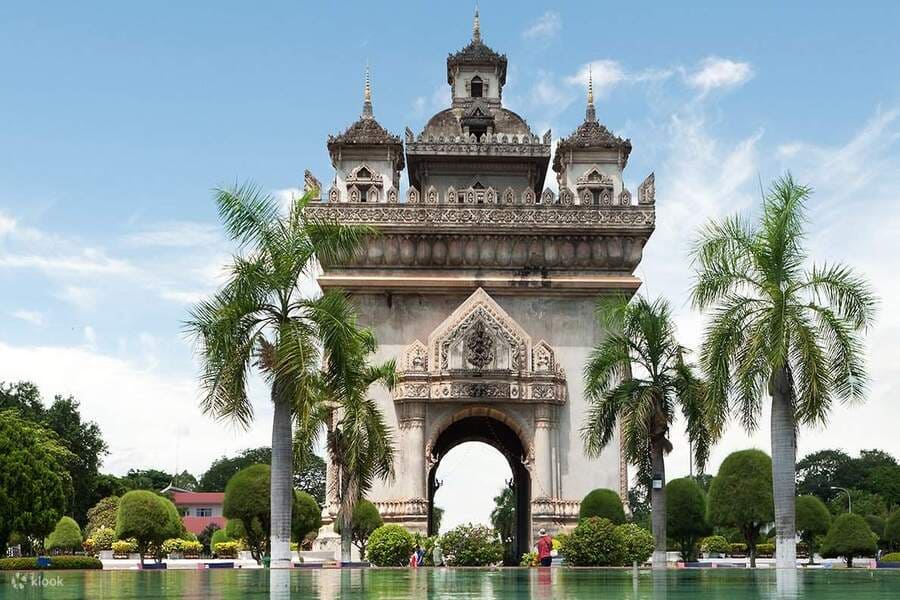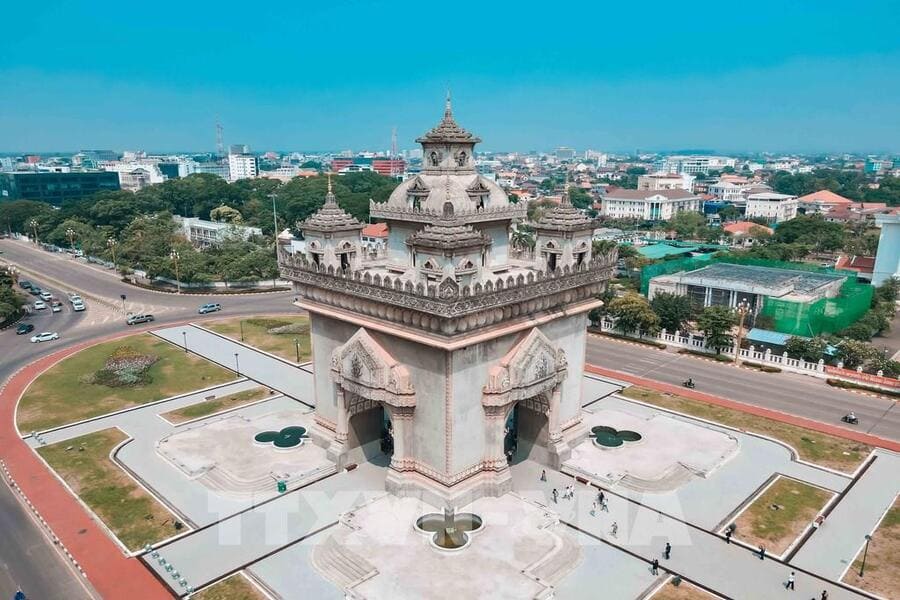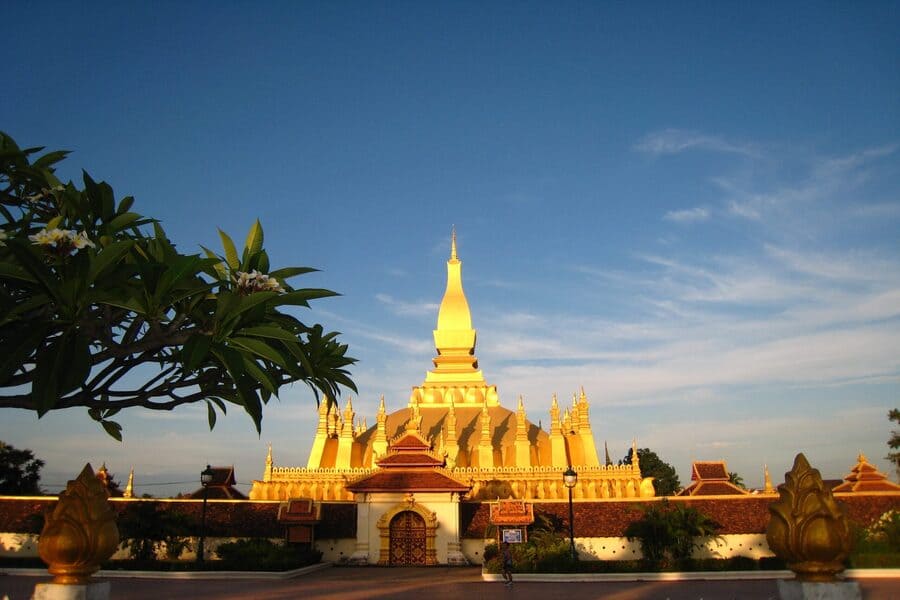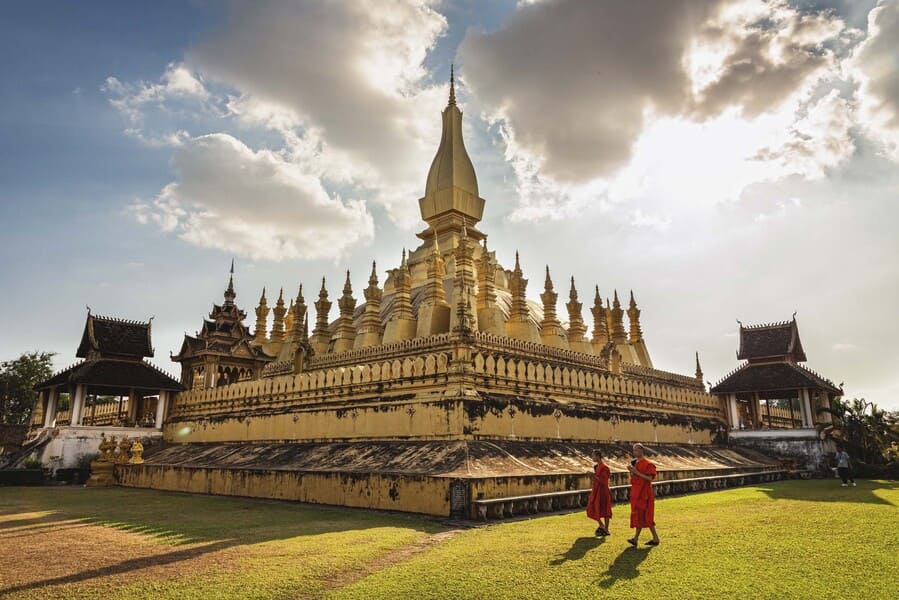Unveiling Vientiane, Laos' laid-back capital city, is an experience in delightful contrasts during laos tours. Immerse yourself in the city's vibrant spirit, where ancient Buddhist landmarks like the magnificent That Luang Stupa stand alongside the awe-inspiring Patuxai, a triumphal arc reminiscent of Parisian architecture. Prepare to be charmed by Vientiane's easy-going atmosphere and its captivating blend of history and cultural treasures.
An Overview of Vientiane
Vientiane, Laos' capital, is a city of contrasts. While it boasts grand Buddhist temples like the gold-covered Pha That Luang, it also features charming French colonial boulevards and wide avenues. This relaxed city offers a glimpse into Laos' rich history and culture. Visitors can wander through vibrant markets, explore serene temples, and soak up the slow pace of life along the Mekong River. Vientiane is well- known for two amazing architectures: Patuxai and That Luang Stupa.
Learn about Patuxai in Vientiane
Patuxai, also known as the Victory Gate, stands tall as a prominent landmark in Vientiane, Laos. More than just a monument, it's a captivating blend of history, architecture, and cultural significance.
The History of Patuxai- Vientiane
Patuxai, also known as the Victory Gate, is a prominent landmark and a significant monument in Vientiane, Laos.
Construction began in 1958 with the intention of commemorating Lao soldiers who fought in World War II and the Franco-Laotian War (1946-1954).
However, due to funding issues and political instability, construction was not completed until 1968.
The Architectural Fusion of Patuxai- Vientiane
East Meets West: Patuxai draws inspiration from the Arc de Triomphe in Paris, but with a distinct Laotian twist. Look for intricate bas-relief carvings adorning the monument, depicting scenes from Lao mythology like the epic of Phra Lak Phra Lam. These carvings are not just decorative; they offer a glimpse into Lao cultural heritage and traditions.
The meaning of Patuxai- Vientiane
- Victory and Resilience: While "Patuxai" translates to "Gate of Triumph," the monument represents more than just victory. It's a symbol of Laotian resilience in the face of war and hardship.
- National Pride: Patuxai has become a national symbol, a source of pride for the Lao people. It reflects their rich cultural heritage and unwavering spirit.
Learn about That Luang Stupa in Vientiane
That Luang Stupa, also known as the "Great Sacred Stupa," is a revered Buddhist monument in Vientiane and a national symbol of Laos.
History of That Luang Stupa
The exact date of construction is unknown, but estimates place it between the 13th and 16th centuries. Some believe it was built to enshrine a chest relic of the Buddha.
Throughout Lao history, That Luang Stupa has been a symbol of Lao sovereignty and a unifying force for the nation.
Architectural Fusion of That Luang Stupa in Vientiane
- Golden Splendor: The stupa's most striking feature is its gold-leafed spire, which shimmers in the sunlight. This reflects the monument's significance in Lao culture.
- Layered Tiers: That Luang Stupa features three square diminishing tiers representing the Buddhist concept of overcoming earthly desires to reach enlightenment.
- Ornate Decorations: Look for intricate bas-relief carvings depicting scenes from the Buddha's life and Lao mythology that adorn the base of the stupa.
The meaning of That Luang Stupa in Vientiane
- Religious Significance: That Luang Stupa holds immense religious significance for Lao Buddhists, representing the Buddha's teachings and the path to enlightenment.
- National Symbol: The stupa has transcended its religious importance to become a national symbol of Laos, reflecting its rich cultural heritage and national pride.
How to get to Patuxai and That Luang Stupa in Vientiane
Patuxai (Victory Gate):
- Patuxai is located in the center of Vientiane, the capital city of Laos. If you're staying in the city center, you can easily reach Patuxai by walking, cycling, or taking a short tuk-tuk or taxi ride.
- If you're coming from Wattay International Airport, which is located about 4 kilometers from the city center, you can hire a taxi or tuk-tuk to reach Patuxai
That Luang Stupa:
- That Luang Stupa is also situated in Vientiane, approximately 4 kilometers northeast of the city center.
- You can reach That Luang by hiring a taxi, tuk-tuk, or renting a bicycle if you prefer. Many hotels and guesthouses in Vientiane also offer guided tours to That Luang and other attractions.
- If you're coming from Patuxai, you can either hire another taxi or tuk-tuk to take you to That Luang, or you can choose to walk if you enjoy exploring on foot.
- Visit the stupa: That Luang is the most important religious monument in Laos and a symbol of Lao sovereignty and Buddhism. Take a tour around the stupa, admire its golden spires, and learn about its history and significance.
- Explore the surrounding area: That Luang is surrounded by a large temple complex with smaller stupas, shrines, and pavilions. Take your time to explore the grounds, visit the temples, and observe the daily rituals of Buddhist worship.
- Shop at the market: There are often local markets set up around That Luang where you can shop for souvenirs, handicrafts, and local products. Take the opportunity to browse the stalls and support local artisans.
- Attend a festival: If you're lucky enough to visit during a festival, such as the That Luang Festival held in November, you can witness traditional ceremonies, processions, and cultural performances celebrating the stupa and its significance.
A visit to Patuxai and That Lung Stupa is more than just sightseeing. It's a journey into Laos' complex history and artistic traditions. So, come explore this iconic landmark and discover the unique story it tells.





